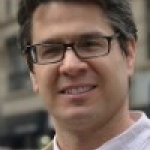
Ms. Emily Peck
Arts & Business Partnerships Continue to Strengthen Both Sectors, Research Finds
Posted by Oct 10, 2018

Ms. Emily Peck
Last week, we celebrated arts and business partnerships at our annual BCA 10: Best Businesses Partnering with the Arts gala. We heard inspiring stories about why businesses value the arts. BCA Leadership Award winner Chandrika Tandon shared how her passion for music provided passion and engagement at her job. Fifth Third Bank spoke about how the arts helped them heal and respond after a mass shooting at their headquarters. Phillips66 shared how the arts create a strong company culture. These stories align with the data from the just released Business Contributions to the Arts survey, which found, among other positive results, that business support for the arts is on the rise.
Read More




























